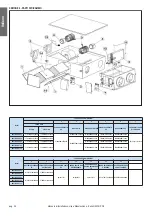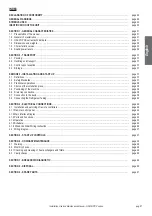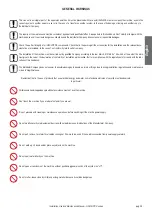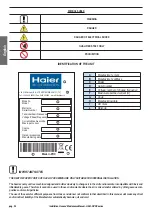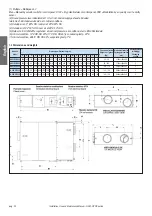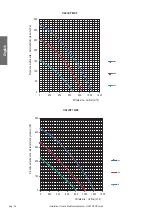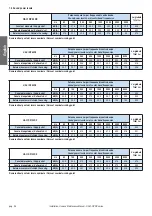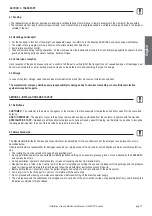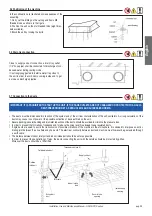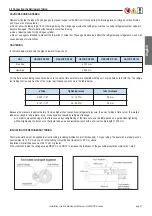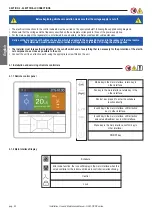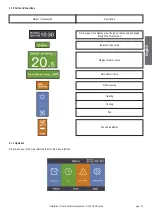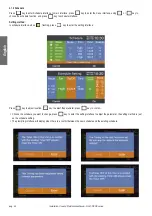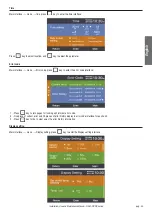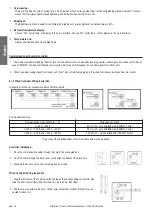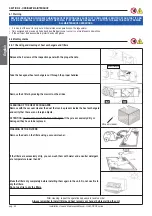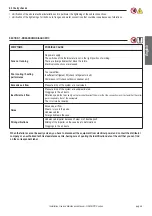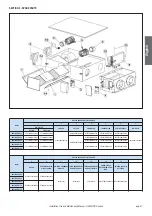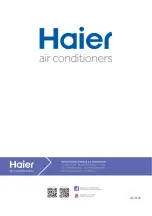
English
3.8 Connecting the Refrigerant Tubing
The unit is supplied with plugged direct expansion coil: to ensure its tightness during storage and transport, inside it is loaded nitrogen gas at
a higher pressure than atmospheric.
1)
First loosen the FLARE 1/4 ”union (1) and carry out the leak test, checking that a clear noise is heard due to the outflow of pressurized
nitrogen coming out of the pipe.
2)
Loosen the 1/2 "FLARE pipe union (2) and remove the rubber cap
3)
Prepare the pipes to be connected following the procedure:
Cut the copper tube to the required length with a tube cutter. It is
•
recommended to cut approx. 30 – 50 cm longer than the tubing
length you estimate.
Remove burrs at each end of the copper tubing with a tube reamer or file. This process is important and should be done carefully to
•
make a good flare. Be sure to keep any contaminants (moisture, dirt, metal filings, etc.) from entering the tubing.
Remove the flare nut from the unit and be sure to mount it on the copper tube.
•
Make a flare at the end of the copper
•
tube with a flare tool. A good flare
should have the following characteri-
stics:
-
inside surface is glossy and smooth
-
edge is smooth
-
tapered sides are of uniform length
Apply a sealing cap or water-proof tape to prevent dust or water from entering the tubes before they are used.
•
Be sure to apply refrigerant lubricant (ether oil) to the inside of the flare nut
•
before making piping connections. This is effective for reducing gas leaks.
For proper connection, align the union tube and flare tube straight with each
•
other, then screw on the flare nut lightly at first to obtain a smooth match.
Adjust the shape of the liquid tube using a tube bender at the installation
•
site and connect it to the liquid tubing side valve using a flare.
Installation, Use and Maintenance Manual - HACI-RP DX series
pag. 40
Summary of Contents for HACI-RP DX 100
Page 52: ...2020 06 ...

